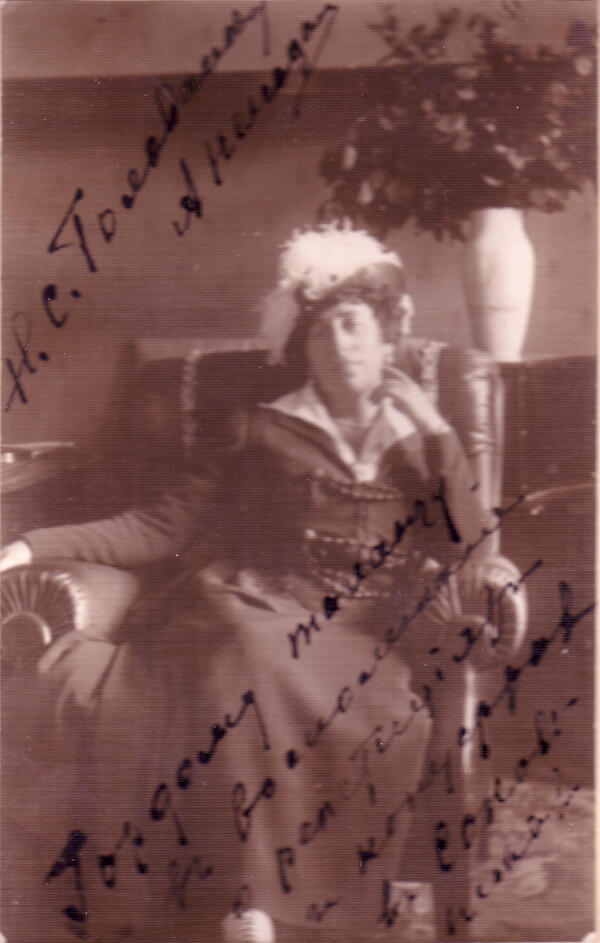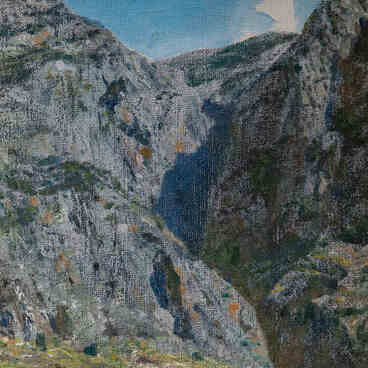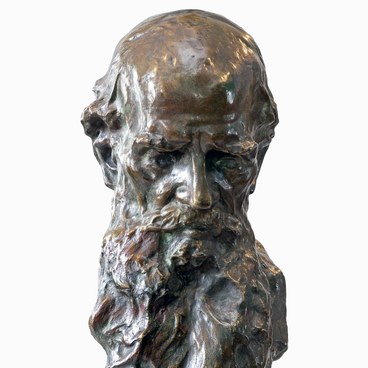The Nikolai Golovanov Apartment Museum houses a photograph of Antonina Nezhdanova — the conductor’s wife — with a dedicatory inscription: “To N.S. Golovanov. A. Nezhdanova. To the sublime talent as a remembrance of our rehearsals…”
The names of the great singer Nezhdanova and the conductor and accompanist Golovanov left a permanent mark in the history of Russian musical culture. The two met in 1915 in the residence of Mikhail Ippolitov-Ivanov, who invited them both to a gala dinner that followed the premiere of a suite from Golovanov’s opera “Princess Yurata”. The close acquaintance of the two talented people was the beginning of their life together, their strong creative union based on the exceptionally good attitude toward each other, the deepest respect and understanding, and the touching affection and care for one another. Very soon, Nikolai Golovanov became the singer’s permanent accompanist and performed at almost all of her concerts, including the last one held at the Tchaikovsky House-Museum in Klin in 1943.
According to the memoirs of contemporaries, the concert duet of Nezhdanova and Golovanov was perfection: the voice and the instrument merged completely, which was achieved by many hours of rehearsals. Despite their vastly different temperaments, Nikolai Semyonovich and Antonina Vasilyevna both had musical sensitivity and saw eye to eye when it came to striving for artistic truth. Over 20 romances written by Golovanov were performed by Antonina Vasilyevna. Several romances were dedicated to the singer personally. It seemed that Nezhdanova took great pleasure in singing those particular romances, and Golovanov, a greatly attentive accompanist that he was, reacted to the slightest nuances in the singer’s performance, following her breath and accentuating the whole charm of the unique timbre of her voice. The famous British writer and playwright Bernard Shaw, stunned by Nezhdanova’s skilled performance of Russian songs, gave the singer his portrait with an inscription that read, “Now I understand why nature let me live up to 70: it was done so that I could hear the best voice in the world — Nezhdanova’s.”
The names of the great singer Nezhdanova and the conductor and accompanist Golovanov left a permanent mark in the history of Russian musical culture. The two met in 1915 in the residence of Mikhail Ippolitov-Ivanov, who invited them both to a gala dinner that followed the premiere of a suite from Golovanov’s opera “Princess Yurata”. The close acquaintance of the two talented people was the beginning of their life together, their strong creative union based on the exceptionally good attitude toward each other, the deepest respect and understanding, and the touching affection and care for one another. Very soon, Nikolai Golovanov became the singer’s permanent accompanist and performed at almost all of her concerts, including the last one held at the Tchaikovsky House-Museum in Klin in 1943.
According to the memoirs of contemporaries, the concert duet of Nezhdanova and Golovanov was perfection: the voice and the instrument merged completely, which was achieved by many hours of rehearsals. Despite their vastly different temperaments, Nikolai Semyonovich and Antonina Vasilyevna both had musical sensitivity and saw eye to eye when it came to striving for artistic truth. Over 20 romances written by Golovanov were performed by Antonina Vasilyevna. Several romances were dedicated to the singer personally. It seemed that Nezhdanova took great pleasure in singing those particular romances, and Golovanov, a greatly attentive accompanist that he was, reacted to the slightest nuances in the singer’s performance, following her breath and accentuating the whole charm of the unique timbre of her voice. The famous British writer and playwright Bernard Shaw, stunned by Nezhdanova’s skilled performance of Russian songs, gave the singer his portrait with an inscription that read, “Now I understand why nature let me live up to 70: it was done so that I could hear the best voice in the world — Nezhdanova’s.”



